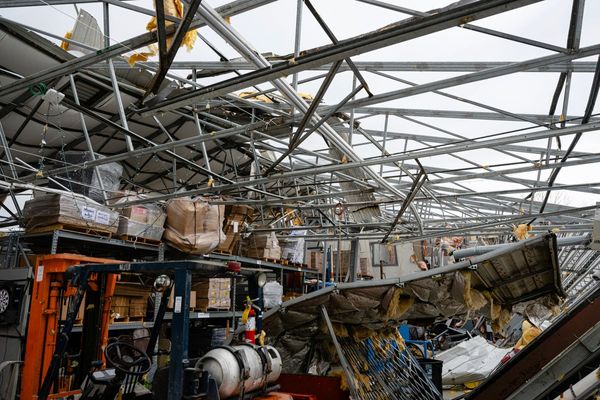
The horrific crash involving a passenger train and a freight train in Greece is the worst in a decade on Europe’s railways, with dozens killed in a high-speed, head-on collision.
Initial pictures seem to make clear that both trains were travelling on the same track, crashing head-on just after the passenger train from Athens to Thessaloniki passed under a road bridge.
A standard speed for trains on the lines would be up to 125mph, less for freight trains, and one witness said the northbound passenger train was travelling at about 100mph. The damage from a head-on collision at such speeds is clear – while several carriages were visibly burned and derailed, the leading two, the regional governor said, “no longer exist”.
At time of writing, there was no evidence made public as to what caused the crash, but a clear question for investigators will be whether the signalling was functioning properly, or whether human error or other circumstances left two trains on the same tracks on a double-tracked line.
Although much of Greece’s small railway network has been closed, it has invested in the major rail artery between Athens and Thessaloniki, and the trains were travelling on what appears to be a well-maintained stretch of the electrified mainline.
The arrest of a station manager in Larissa who, according to some reports, could have wrongly directed one of the trains, suggests human error is an initial line of inquiry.
The last comparable tragedy in Europe was in 2016, when a head-on collision in Bad Aibling in Germany killed 12 people. In that incident, a distracted signaller, who allowed two trains to travel in opposite directions down the single-track line, was found responsible.
The last railway accident in Europe to cause such fatalities was a high-speed derailment in Spain in 2013, when 80 people died after a train overturned near Santiago de Compostela.
On measures including overall fatalities per kilometre, Greece’s rail safety record has been the worst in the EU over the past decade, according to statistics from the EU railway agency – although this is easily skewed by its small network, about 2% of the UK’s size. A high proportion of deaths have been track workers rather than passengers.
The Greek rail operator Trainose was privatised in 2017 – as part of reforms imposed alongside the EU bailout of Greece – and attracted only one credible bid, from the Italian state-owned group Ferrovie dello Stato Italiane, which also with First Group runs Avanti in the UK through its Trenitalia subsidiary.
Although there is no evidence of what caused the crash, some in Greece are already asking questions about the financing, staffing and maintenance of the railway.
The former finance minister Yanis Varoufakis tweeted: “Now is the moment to grieve and to look after the injured and the victims’ families. But soon we shall bring to Greece’s parliament the underlying issue: yet another tragedy caused by a hideous railway privatisation. Paddington 1999, Larissa 2023.”







